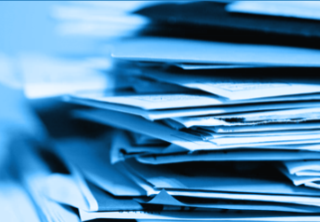USPTO Updates Electronic Signature Rules
- March 22, 2024
- Article
- by David Longo and Ismail Ahmadi
Associated People
Effective March 22, 2024, the U.S. Patent and Trademark Office (USPTO) is updating its patent correspondence signature regulations to “simplify and streamline” its processes and “to more closely align the signature requirements for patent and trademark correspondence.” Specifically, the USPTO is updating its current rule, 37 C.F.R. § 1.4(d), which encompasses handwritten signatures, S-signatures (non-handwritten signatures enclosed in forward slashes), and graphic representations of these signatures, with a new section, § 1.4(d)(4). This new section expands the scope of permissible signatures to embrace a wider array of electronic signatures through popular document-signing platforms such as DocuSign® and Acrobat® Sign.
Under the new Rule 1.4(d)(4), electronic signatures from third-party software are valid if they adhere to specific requirements: they must be personally created by the signer, clearly identify the signer, include the patent practitioner's registration number if applicable, and be generated by software specially designed to secure the signature data with digital certificates, tokens, or audit trails. Additionally, the software should indicate the use of document-signing technology and, preferably, record the date of the signature for patent matters (to align with trademark procedures that already require including the date). According to the USPTO, an electronic signature under new Rule 1.4(d)(4) “may be used whether the correspondence is being submitted via the USPTO patent electronic filing system, mailed, faxed, or hand delivered.”
This is a notable change from previous USPTO regulations, which “did not permit patent correspondence to be electronically signed by methods other than the electronic entry of S-signatures under § 1.4(d)(2) and the graphic representation method of § 1.4(d)(3),” the latter being permitted only “if the correspondence was being submitted via the USPTO patent electronic filing system.”
However, new Rule 1.4(d)(4) still does not permit “[s]ignatures created using other types of software, such as graphic editing software.” The new rule also does not alter the existing USPTO requirement that “a signature must be personally inserted or generated by the named signer. Another person may not use document-signing software to create or generate the electronic signature of the named signer.”
This update incorporates feedback from stakeholders and aligns USPTO’s practices with international intellectual property standards, particularly through cooperation with the IP5, the consortium of the world's five largest IP offices.
The final rule is available here: Federal Register
Recent Publications
Federal Circuit Holds Prosecution History Disclaimer Applicable to Design Patents
by Sana Tahir, Law Clerk and Andrew Ollis, Partner
The PTAB Radically Changes its Approach to Discretionary Denials
by Andrew Ollis, Partner and Sana Tahir, Law Clerk










 Counseling & Strategic Advice
Counseling & Strategic Advice IP Transactions
IP Transactions Litigation
Litigation PTAB Proceedings
PTAB Proceedings Technology Transfer
Technology Transfer Trademark & Designs
Trademark & Designs U.S. Patent Procurement (Application Drafting & Prosecution)
U.S. Patent Procurement (Application Drafting & Prosecution)








